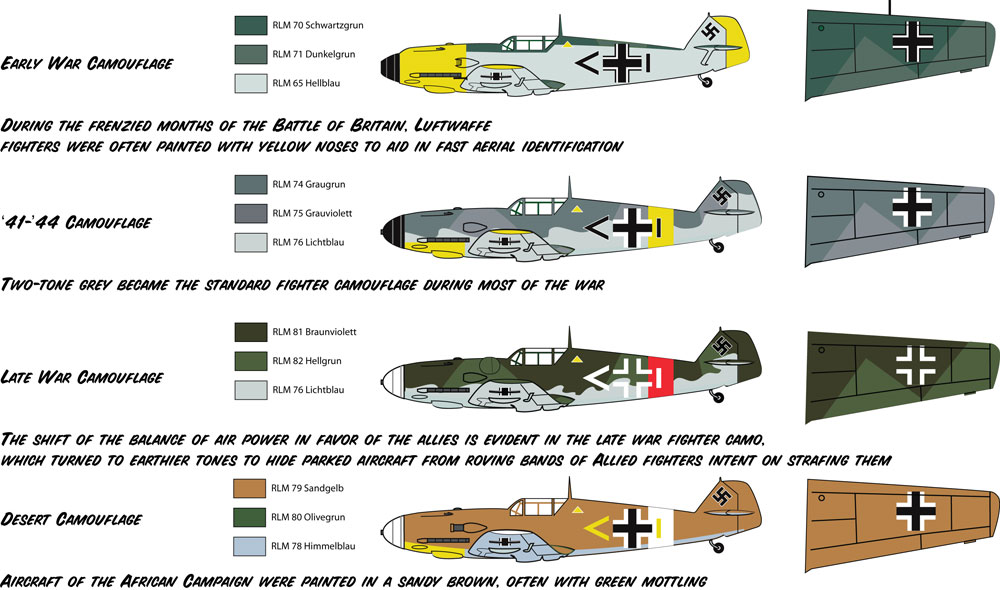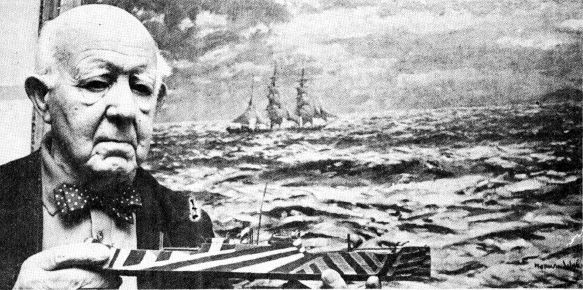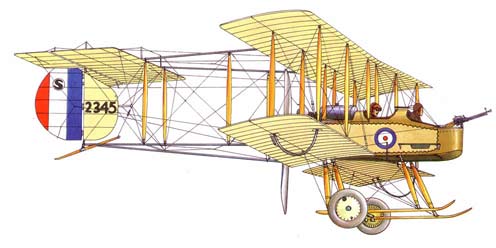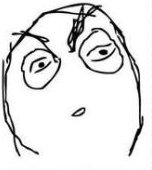"Galvanimbus" is the name I have given this conceptual floating airbase.
I have a pencil design but I cant find a scanner that works at the moment so I can only show the Maya stuff for it.
I chose the name Galvanimbus from looking at names for clouds, "Nimbus" may be familiar to people from other fantasy type games, it is of course also the name of a low altitude rainbaring cloud. and Galvanising is when normally metal A is covered in another metal B to better preserve Metal A and protect it from corrosion.
since this is essentially a metalic cloud base, the cloud is covered in metal and therefore "Galvanised" it can shoot and release a shower of firepower on its enemies, and so "Nimbus"
Im not fully sure if its completed yet, on my pencil sketch I had more proppellers beneath the runway, and I think maybe the runway could use something to prop it up, spanning from the base, above where the crows nest descends.
also there was another proppeller on the underneath of the crows nest.
It is about 290m tall from the tip of the lift proppellers to the base of the crows nest, and roughly 250m from the tips of the landing strips. the USS lexington had a airstrip of 266 meters long so its pretty accurate for the period.
Dii's Blog
Monday 3 October 2011
Wednesday 28 September 2011
Factional Design Theory
Moving a little to the side from texture we have in essence the identity of each faction. by this I mean the way I should go about designing the aircraft, their shape, colour and insignia.
Shape-
being in the room during Justin Wyatt's initial character design lecture last... I think it was monday? Anyway, it brought back some memories of how to make characters as people, using this I think i could apply the same principles to my aircraft designing.
I remember the way he mentioned the use of shapes defining the characters, villains typically were made up of triangular type shapes as well as squares, where as the hero is made almost exclusively of square type shapes with the side kick (being used for comedy purposes) made of softer, circular shapes.
since im doing vehicles and there will only be 2 sides, instead of three. So one side should use triangles and square shapes, and the other rounded circular with square shapes.
circles are a more peaceful shape, this will probably be given to the protagonist faction, and of course the evil faction should have a more sharp and strong look using triangles and squares. A good example of this would be an Imperial Star Destroyer, from starwars, which is just a giant triangle with squares on top.
then looking at the Rebel Alliance ship of the same class you see that it is made of rounded shapes and much softer looking curves.
it is important that each side be unique in design. the design normally is based on how the faction itself operates.
<cant find an image at the moment, ill make one and upload later>
also, there logos both define the sides actually pretty well. Nod as the antagonistic terrorist force are mostly red and black, sneaky and with a deadly fast strike like the scorpion, and GDI as the protagonist force are gold painted like heros of justice only with a military vibe instead of a superhero one, and are capable of swooping in and annahilating the enemy like the eagle.
In the Homewold universe, the two sides Vaygr (antagonists) and Hiigarans (protagonists) have vessels that are the same (more or less) to the other factions, so each side has a battleship/ cruiser/ destroyer, etc. the only difference is their design.
while Hiigaran ships (top) are built on a horizontal axis, Vaygr ships (bottom) are built on a verticle axis, making both side easily distinguishable from one another.
these two ships are the same class but are easily distinguishable from one another, with my own work i need to remember not to fall into the trap of making everything look the same. I too want both of my factions to become different and take on their own unique look.
once again, colour comes into play as a key point of their design, the calm sky blue/white colours of the protagonist ship, and the dark black/red of the antagonist ship, even without any knowledge of Homeworld this can give people a clear idea of who is who.
Vaygr insignia on the left and the Hiigaran on the right, the Vaygr insignia uses much sharper and angular shapes than the Hiigaran equivalent, also it symbolises V for Vaygr so it reflects the faction in more ways than one. The Hiigaran insignia is rounded and softer than the Vaygr one, it symbolises the planet Hiigara and its "Angel Moon" the Angel moon being displayed with wings, wings symbolising flight and freedom.
The Vaygr symbol normaly in a dark red/ Maroon and the Hiigaran symbol normally in white.
The roundels used by the airforces in world war one, the german empire Iron Cross is much sharper in shape than the softer RAF union jack roundel. of course since this is the real world their roundels exist on a more historical basis and werent designed to be Good and Bad, since in the eyes of the German Empire they wouldnt have thought of themselves as the antagonists in a storyline
In the Star Trek Universe, the Klingon Empire (left) and the United Federation of Planets (right) follow the same pattern, the klingons being the main antagonist force throughout most of the Star Trek series, its insignia is dominated by sharp razor blade like spikes in a red and black setting. where as the Federation insignia is rounded, with a calmer looking blue.
The sharp effect also applies to real life examples like the above caution sign, even without the exclamation mark we know that this catches peoples eye straight away, and is therefore an effective shape for a symbol of warning. the triangle shape and the contrasting colours immediatley make this stand out.
To make my own insignia, I need to think of a name for each faction, and a goal for each faction.
Shape-
being in the room during Justin Wyatt's initial character design lecture last... I think it was monday? Anyway, it brought back some memories of how to make characters as people, using this I think i could apply the same principles to my aircraft designing.
I remember the way he mentioned the use of shapes defining the characters, villains typically were made up of triangular type shapes as well as squares, where as the hero is made almost exclusively of square type shapes with the side kick (being used for comedy purposes) made of softer, circular shapes.
since im doing vehicles and there will only be 2 sides, instead of three. So one side should use triangles and square shapes, and the other rounded circular with square shapes.
circles are a more peaceful shape, this will probably be given to the protagonist faction, and of course the evil faction should have a more sharp and strong look using triangles and squares. A good example of this would be an Imperial Star Destroyer, from starwars, which is just a giant triangle with squares on top.
then looking at the Rebel Alliance ship of the same class you see that it is made of rounded shapes and much softer looking curves.
it is important that each side be unique in design. the design normally is based on how the faction itself operates.
for example,
In the command and conquer universe, the Brotherhood of Nod (right) and the Global Defence Initiative (left) differ greatly in their appearance and tactics, and so their units reflect this.
Nod prefer stealth and fast attack units, while GDI prefer strength and crushing firepower, so their tanks reflect this.
GDI has Large tanks, that are expensive to build and slow moving
Nod has small tanks and light armoured vehicles that are cheap to build and fast moving
are generally much smaller than anything GDI has.<cant find an image at the moment, ill make one and upload later>
also, there logos both define the sides actually pretty well. Nod as the antagonistic terrorist force are mostly red and black, sneaky and with a deadly fast strike like the scorpion, and GDI as the protagonist force are gold painted like heros of justice only with a military vibe instead of a superhero one, and are capable of swooping in and annahilating the enemy like the eagle.
In the Homewold universe, the two sides Vaygr (antagonists) and Hiigarans (protagonists) have vessels that are the same (more or less) to the other factions, so each side has a battleship/ cruiser/ destroyer, etc. the only difference is their design.
while Hiigaran ships (top) are built on a horizontal axis, Vaygr ships (bottom) are built on a verticle axis, making both side easily distinguishable from one another.
these two ships are the same class but are easily distinguishable from one another, with my own work i need to remember not to fall into the trap of making everything look the same. I too want both of my factions to become different and take on their own unique look.
once again, colour comes into play as a key point of their design, the calm sky blue/white colours of the protagonist ship, and the dark black/red of the antagonist ship, even without any knowledge of Homeworld this can give people a clear idea of who is who.
The Vaygr symbol normaly in a dark red/ Maroon and the Hiigaran symbol normally in white.
The roundels used by the airforces in world war one, the german empire Iron Cross is much sharper in shape than the softer RAF union jack roundel. of course since this is the real world their roundels exist on a more historical basis and werent designed to be Good and Bad, since in the eyes of the German Empire they wouldnt have thought of themselves as the antagonists in a storyline
The sharp effect also applies to real life examples like the above caution sign, even without the exclamation mark we know that this catches peoples eye straight away, and is therefore an effective shape for a symbol of warning. the triangle shape and the contrasting colours immediatley make this stand out.
To make my own insignia, I need to think of a name for each faction, and a goal for each faction.
Master of the World - Film Review
An interesting film, and easily one of the most relevent to my particular project. It has of course the the vibe that it is indeed from the 70's with the gentlemenly undertones of most of the actors, and not to mention the special effects which made me chuckle from time to time.
The plot itself was good, I didnt really expect the film to be like it was, in all honesty i did not know what to expect when watching it. one of the really good parts of the film was the breif history of flight and mans early inventions to achieve it, listing about 13 different inventions and how they all failed, before the Wright Brothers finally got it right.
To my suprise the antagonist of the film was actually the owner of the airship Albatros, which is the worlds first and only ship/aircraft of its kind. a giant aircraft with many decks and decoration like an ordinary ship, only it flys in the sky with 4 dozen proppeller blades on top of the ship. The ship interestingly enough was mostly made from a paper derivative, mixed with clay and combined in a hydrolic press to make it light but still durable.
The plot of the film, is that the antagonist has a giant near invulnerable airship landed in the mountain crater at Penyslvania, the repairs on the ship and the use of the "voice amplifier" make the people of the town believe there is a volcano erupting or some other such calamity. The protagonist group go to explore the crater in a hotair balloon that has a furnace on board and a rather shallow gondola. when they approach the crater they are shot down by rockets and fall unconscious, during this time they are taken aboard the antagonists airship but are treated as guests rather than prisoners, allowed to come and go around the ship as they please.
The 4 protagonists became allarmed and questioned the nature of the ship when they saw the ship had an armoury, not long after the ship commenced a bombing run on an american sail warship. which again, juding from the airships design I expected to see a metal clad ship not a wooden sailing wariship instead, i was suprised again by this.
The Antagonist wishes to use the albatross to end all wars in the world by destroying all craft designed for warfare, saying he has no grudge against any one nationality, because he himself claims to be a "citizen of the world".
After dropping propoganda leaflets onto london ordering the british government to disarm all weapons and dispand all armies, he then bombs the fleet of warships docked in the Thames river and begins to travel the world, visiting all the major cities and doing the same thing.
the protagonists attempt to escape when the ship is rumoured to be landing to take on water for continued flying, however one of them, knowing that the ship intends to use a kind of snorkel device informs the captain of their plans, to save their life, knowing that if they had decieded to jump from the airship, they would surely have perished. the others believed him to have betrayed them and things seem hopeless once again.
during a bomb run the ablatross was damaged, and its captain was injured. the topside proppellers became sluggish and the airship began to fall slowly, after restoring the power the airship anchored itself off the coast of an island and began to make emmergency repairs.
Eventually all misunderstandings between the 4 protagonists are cleared up and the 4 of them manage to set a bomb in the armoury while the ships crew performed the emergency maintenace on the topside propellers, they then escaped down the anchor rope to the ground, while being fired upon, two of them being shot multiple times in the process, the captain orders their retrieval and the crew use the anchor wire to pull the airships down closer to the ground, but before they do the protagonists cut the rope and the airship zips back into the sky and shortly after that the bomb explodes doing irepperable damage to the albatross, regretably the captain orders all to abandon ship, he then sits in his chair on the bridge intending to go down with the ship.
at the end all the crew decided not to abandon the captain, but stay with him to the end, and for that he thanked them and began speaking from the bible shortly before the airship burst into flames and crashed into the sea and sunk.
All in all it was a good film and I enjoyed it and would easily recommend it to any fan of airships.
Friday 23 September 2011
Thursday 22 September 2011
Forward thinking - Texture Research
Flash thinking ahead to texture... I was thinking about camouflage...

Hm, well its just that even large warships nowadays have camouflage, and in the war they did too.. some more than others, all Royal navy ships had sky blue and white zig zag patterns if looked at from the side.
This type of camouflage is called "Dazzle painting" or as the americans called it "Razzle Dazzle" and was created by the painter Norman Wilkinson, though it may seem absurd trying to camouflage such large vessels with paint alone, the purpose of the Razzle Dazzle paint was confuse the opponent rather than to mask the ships location. By making it difficult to determine the ships heading and speed the Dazzle paint could help to increase a ships survivability by putting off the old fashioned range finders and telescopes used in submarines or for artillery.
For example here is a normal house/appartment painted completely in Dazzle type patterns, it makes you think and try to focus in on where certain parts are, and what it is you are actually looking at.
Dazzle was created because the sea and sky contantly change, unlike grass or a forest, where the colour palletes are consistent and permanent throughout, one camouflage type painted on a ship would only work in 1 weather condition, as soon as the weather changed the ship would again stand out like a sore thumb.
so the royal navy moved for a different approach to the problem.


however of course as things became more advanced, aircraft and such, especially the introduction and wide spread use of Radar, made Dazzle camouflage increasing outdated and eventually useless towards the middle of the second world war.
Regardless of its becoming obsolete as a means of effective confusion, i think a airship with this Dazzle paint texture on it would look really really good. definatley something to do a test of in the furute.
Aircract Camouflage
Since its all about the sky for my production, looking at the camouflage used by aircraft is a must.
Good video of the camouflage used on Luftwaffe (german airforce) aircraft during the war.
Looking at this video before doing any other research, it seems as though there is no correlation between each plane and their camouflage, also each plane features a series a set of different camouflages, which is something to think about for my final pieces.
Aircraft have 2 camouflages, the paint on top of the hull, and the paint on the bottom of the hull. since they are seen from both above and below its important to have camouflage on both sides.
the camouflage on the topside is to defend mostly against hostile planes already in the air, masking the plane by blending it in with the scenery of its airbase. and of course the camouflage on the underside was to defend against Flak and other ground based anti-aircraft devices looking up into the sky.
Early aircraft in world war 1 were not camouflaged at all, and their fragile wooden frames and cloth wings made them easy targets for any plane in the sky above them, easily visible and sticking out like a sore thumb the losses of aircraft for both sides due to this spurred on the use of camouflage.

looking at this image, you spot the first four planes on the picture with a cream non camouflage body than the green camouflaged plane in the top left of the image.
Another classic example of the lack of camouflage in WWI is of course the Red Baron, and his dashing symbolic red Tri-winged aircraft (fokker Dr. 1) which has become more of an iconic symbol of the era.
http://www.fritzthefox.com/british_camo_guide.html
Found a good website with descriptions of various camouflages for all of the sides in the war, it is for model enthusiasts (physical model not 3D) but still it can work for what i may need it for.

Well its part of the visual identity for both sides that I need to come up with. Since they are war machines, and war machines need a battle to fight in, and battles need factions to dislike eachother, and so on.
So I need to figure out a litte bit of back story for my idea, need to think about the world its set in, as well as some basic politics and reasons for fighting, since just saying "they dont like each other" isnt really too exciting.
If it for a game, the game will need a narative at least on a very marginal level.
"Hmm, Dii.. whatever do you mean?"

Hm, well its just that even large warships nowadays have camouflage, and in the war they did too.. some more than others, all Royal navy ships had sky blue and white zig zag patterns if looked at from the side.
This type of camouflage is called "Dazzle painting" or as the americans called it "Razzle Dazzle" and was created by the painter Norman Wilkinson, though it may seem absurd trying to camouflage such large vessels with paint alone, the purpose of the Razzle Dazzle paint was confuse the opponent rather than to mask the ships location. By making it difficult to determine the ships heading and speed the Dazzle paint could help to increase a ships survivability by putting off the old fashioned range finders and telescopes used in submarines or for artillery.
For example here is a normal house/appartment painted completely in Dazzle type patterns, it makes you think and try to focus in on where certain parts are, and what it is you are actually looking at.
Confusing no?
Dazzle was created because the sea and sky contantly change, unlike grass or a forest, where the colour palletes are consistent and permanent throughout, one camouflage type painted on a ship would only work in 1 weather condition, as soon as the weather changed the ship would again stand out like a sore thumb.
so the royal navy moved for a different approach to the problem.
British War and Merchant shipping, painted in 'Dazzle Paint' camouflage


Print by Edward Wadsworth, one of the men incharge of applying the camouflage to British shipping
however of course as things became more advanced, aircraft and such, especially the introduction and wide spread use of Radar, made Dazzle camouflage increasing outdated and eventually useless towards the middle of the second world war.
Regardless of its becoming obsolete as a means of effective confusion, i think a airship with this Dazzle paint texture on it would look really really good. definatley something to do a test of in the furute.
Aircract Camouflage
Since its all about the sky for my production, looking at the camouflage used by aircraft is a must.
Good video of the camouflage used on Luftwaffe (german airforce) aircraft during the war.
Looking at this video before doing any other research, it seems as though there is no correlation between each plane and their camouflage, also each plane features a series a set of different camouflages, which is something to think about for my final pieces.
Aircraft have 2 camouflages, the paint on top of the hull, and the paint on the bottom of the hull. since they are seen from both above and below its important to have camouflage on both sides.
the camouflage on the topside is to defend mostly against hostile planes already in the air, masking the plane by blending it in with the scenery of its airbase. and of course the camouflage on the underside was to defend against Flak and other ground based anti-aircraft devices looking up into the sky.
Early aircraft in world war 1 were not camouflaged at all, and their fragile wooden frames and cloth wings made them easy targets for any plane in the sky above them, easily visible and sticking out like a sore thumb the losses of aircraft for both sides due to this spurred on the use of camouflage.
Camouflage Example

looking at this image, you spot the first four planes on the picture with a cream non camouflage body than the green camouflaged plane in the top left of the image.
Another classic example of the lack of camouflage in WWI is of course the Red Baron, and his dashing symbolic red Tri-winged aircraft (fokker Dr. 1) which has become more of an iconic symbol of the era.
http://www.fritzthefox.com/british_camo_guide.html
Found a good website with descriptions of various camouflages for all of the sides in the war, it is for model enthusiasts (physical model not 3D) but still it can work for what i may need it for.
Content example, Me-109 Paint Scheme

*snaps fingers* back to airships
"Would there be any point in adding camouflage to an airship?"
Well its part of the visual identity for both sides that I need to come up with. Since they are war machines, and war machines need a battle to fight in, and battles need factions to dislike eachother, and so on.
So I need to figure out a litte bit of back story for my idea, need to think about the world its set in, as well as some basic politics and reasons for fighting, since just saying "they dont like each other" isnt really too exciting.
If it for a game, the game will need a narative at least on a very marginal level.
Hmm, more to think about.
Tuesday 20 September 2011
Self Directed Project
So... For this project, I know I want to be working on vehicles ive looked at most of the vehicles commonly found in life, however there was a few missing, Hovercrafts, Spacecraft, and Airships.
In these three I have attempted one before, but for a few reasons it didnt go quite as I wanted.
Airships and Aircraft.
Regardless of trying before, this is where I will be directing my focus for this project once again, the first time suffered from being too directly focused with existing airships (of which there were very few that actually survived) which left me bottlenecked eventually and put into a corner.
However, after soaking in a dozen hours of Ghibli animation I wondered about the airship design again, because.. in no way are the airships in any ghibli production capable of flight, yet they do. this is obviously because they are fictional, last time I was so bogged down in reality that the end result of my stuff suffered heavily for that.
The ZMC-2 was the airship that I used for my transcription in year two. chosen because it was the only airship ever to fly with an entirely metallic envelope, so I naturally thought "for the concept of a combat airship it is the only suitable candidate".
But again, when thinking about it realistically, designing an airship that is heavily based on reality, is destined to fail, because all the airships that ever flew in reality including the ZMC-2... Failed. Haha, true story.
So, I will be untethering the all the ropes and chains making the designs fixed into a position that they cant evolve from.
A fantastic example of what I would want to accomplish for this project, is a series of planes and Airships that fit into a shipline bracket using inpiration from Laputa Castle in the Sky's "Goliath" air destroyer.
When looking at this it is clear that it could never fly in reality, yet who cares?! it flies because Miyazaki said it can fly and thats all we need to know. taking that on board Im going to design and make a series of ships using this as inspiration.
I also looked at airships used in his other productions, because Dirigibles are a common theme for most of Miyazaki's works. however the other dirigibles are either far too enchanted looking / magical, or too realistic.
by enchanted and whimsicle I mean they encompass flapping wings and fins like an organic creature. while flapping wings work aesthetically in the setting they are placed in (Howls Moving Castle) because it is a world based heavily on magical spells witches and wizards, It is not the way I personally want to see my productions take shape. here are some examples.
Lots and lots of organic feeling and looking technology here, wings like a bird, and fins like a fish. whereas Goliath is purely industrial looking, It looks like it was designed to be the most powerful thing to ever fly.
on the common looking airship (A) the small box at the bottom of the envelope (the balloon part) is called the "Gondola" on the odd looking super cool quick paint drawing of the air galleon (B) the gondola is still the part that hangs down from the main envelope section.
Airship designs where Galleons are used as Gondola for Airships to make them fly have been used before by various people, the newest incarnation of this kind of airship is from the newest 3 Musketeers film there is a floating galleon with sails on the sides of the ship instead of the top, since the top had been replaced by a large balloon type device.
Its the Metal clad, proppeller driven airship type of craft that really makes me gave a nerdgasm, even though all the others enchanted or not are cool, they are not what I will be looking for in this project.
In these three I have attempted one before, but for a few reasons it didnt go quite as I wanted.
Airships and Aircraft.
Regardless of trying before, this is where I will be directing my focus for this project once again, the first time suffered from being too directly focused with existing airships (of which there were very few that actually survived) which left me bottlenecked eventually and put into a corner.
However, after soaking in a dozen hours of Ghibli animation I wondered about the airship design again, because.. in no way are the airships in any ghibli production capable of flight, yet they do. this is obviously because they are fictional, last time I was so bogged down in reality that the end result of my stuff suffered heavily for that.
The Real ZMC-2
My Transcription ZMC-2
The ZMC-2 was the airship that I used for my transcription in year two. chosen because it was the only airship ever to fly with an entirely metallic envelope, so I naturally thought "for the concept of a combat airship it is the only suitable candidate".
But again, when thinking about it realistically, designing an airship that is heavily based on reality, is destined to fail, because all the airships that ever flew in reality including the ZMC-2... Failed. Haha, true story.
So, I will be untethering the all the ropes and chains making the designs fixed into a position that they cant evolve from.
A fantastic example of what I would want to accomplish for this project, is a series of planes and Airships that fit into a shipline bracket using inpiration from Laputa Castle in the Sky's "Goliath" air destroyer.
"Goliath" (dual screenshot collage)
When looking at this it is clear that it could never fly in reality, yet who cares?! it flies because Miyazaki said it can fly and thats all we need to know. taking that on board Im going to design and make a series of ships using this as inspiration.
I also looked at airships used in his other productions, because Dirigibles are a common theme for most of Miyazaki's works. however the other dirigibles are either far too enchanted looking / magical, or too realistic.
by enchanted and whimsicle I mean they encompass flapping wings and fins like an organic creature. while flapping wings work aesthetically in the setting they are placed in (Howls Moving Castle) because it is a world based heavily on magical spells witches and wizards, It is not the way I personally want to see my productions take shape. here are some examples.
Lots and lots of organic feeling and looking technology here, wings like a bird, and fins like a fish. whereas Goliath is purely industrial looking, It looks like it was designed to be the most powerful thing to ever fly.
It encompasses strong looking rivetted metalic plating symbolic of early metalic steam warships like HMS-Dreadnaught, and other things like the 1916 Mark I "Tank" the first ever self proppeled war machine.
However because its an airborne vessel, it has been given this kind of rounded feel to decrease its aerodynamic profile despite its size.
(the rivets arent propperly clear on this image of Dreadnought :< )
The old Rivetted metal plating can be more easily seen on an unnamed Armoured Train that is also used to further the odd technological setting of the Laputa Castle in the Sky movie.
*snaps fingers* and back to airships
from the enchanted airships of Howls Moving Castle, there was another dirigible refference in Kiki's Delivery Service which was too much like a real world airship to really take any refference from, since im trying to avoid the real world scene again for this project.
Looks very similar to a scaled down version of Hindenburg which as we are all aware, exploded in an infamous explosion resulting in the famous quote "Oh the humanity!"
There are of course other types of airships which take on a even more ancient theme, from the wind sail and galleon ages of the 1600's where literally the gondola of the airship is a Galleon type sailing hull.
(geek insert :> )
Airship designs where Galleons are used as Gondola for Airships to make them fly have been used before by various people, the newest incarnation of this kind of airship is from the newest 3 Musketeers film there is a floating galleon with sails on the sides of the ship instead of the top, since the top had been replaced by a large balloon type device.
This kind of airship features more prominantly in the Steampunk genre of film and media, searching in google "Steampunk airship" will grant you an entire catelogue of these types of airship, from renders to models to concepts. Im not too fond of the old galleon sailing ships, whether airborne or not, I just feel that nerdy buzz that I feel when watching Laputa.
Now of course, "Goliath" isnt the only aircraft in the movie Laputa Castle in the Sky, there is also the Tiger Moth, which is a pirate ship, not typically designed as a galleon looking craft, and is actually rather a cute looking small airship. which again, would never fly in real life, but as we have seen, it clearly does fly because Miyazaki says it does.
Its the Metal clad, proppeller driven airship type of craft that really makes me gave a nerdgasm, even though all the others enchanted or not are cool, they are not what I will be looking for in this project.
Subscribe to:
Posts (Atom)

























































